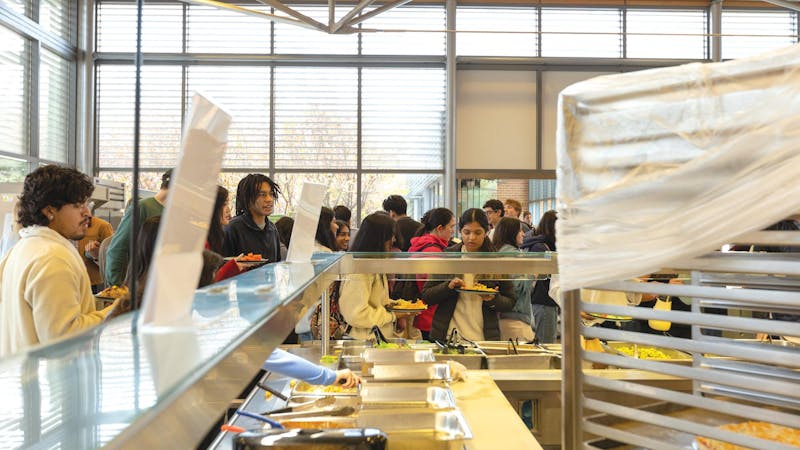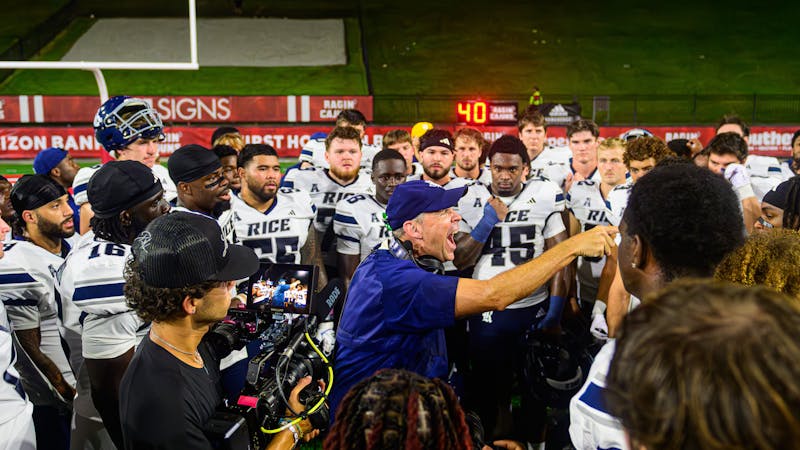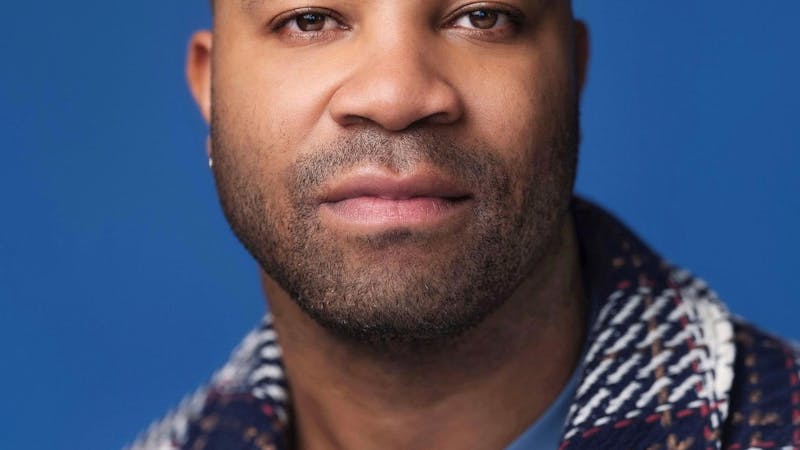Temporary triage center set up in Oshman Kitchen
Rice hosted its first medical triage center last week in the Oshman Engineering Design Kitchen in an attempt to keep the hospitals in the Texas Medical Center from overflowing with patients arriving after Hurricane Ike. The triage was planned to remain on campus for several weeks, Jim Parisi, Memorial Hermann Hospital System Executive for Emergency Services, said. In another effort to help the overburdened medical center, the university opened its Greenbriar lot last week as a landing pad for five helicopters.
The triage center
The triage center closed at the end of last week because there were not enough patients to justify the center's presence and the hospitals were running smoothly enough that they could handle more patients, Carolie Allgood, School Administrator for the Brown School of Engineering, said.
Parisi said the combination of the lack of electricity in most of Houston immediately following Hurricane Ike and the fact that people were quickly running low on their supplies of medicine meant that surrounding hospitals were being filled to capacity. Parisi said he reached out to nearby medical facilities like Methodist, St.Luke's and Ben Taub Hospitals, which agreed that an urgent care facility was needed.
A triage prioritizes patients by their injuries before treating them. The triage center at Rice primarily received patients who arrived in ambulances. Once they arrived, they were screened for injuries. If the wounds were minor, they could be treated on the spot, and if the wounds were serious, the patients were transported to nearby hospitals.
Parisi said the triage center was not intended as a long-term care facility.
"We're more of an urgent-care place," Parisi said. "We set [the triage] up so we could decompress the emergency rooms after the hurricane."
Last Monday, Parisi said he filed an official state request for a triage facility and was granted permission, provided he could put together a team and a place.
Rice was immediately designated an ideal spot for the triage due to its close proximity to the Texas Medical Center. Parisi contacted the university shortly thereafter.
Parisi said he talked with Vice President for Administration Kevin Kirby and was given and reviewed several options for locations for his facility before he decided on the Oshman Engineering Kitchen. He said the area was ideal because renovations to the kitchen had just been completed, but students and faculty had not yet begun to use it.
Dean of Engineering Sallie Keller- McNulty said she embraced the idea of using her department's new kitchen to help the community.
"To renovate [Oshman Engineering Kitchen], we had to raise money from alumni and industrial partners," Keller-McNulty said. "When I let those key donors know what we were doing, they were thrilled that the facility was helping Houston in crisis."
Although the triage did not have the capability to perform advanced testing, such as taking X-rays, the center could treat a variety of problems ranging from respiratory trouble to burns, and could test for blood sugar and potassium levels.
The triage center could provide care for up to 250 patients per day. Two Disaster Medical Assistance Teams comprised of 75 volunteers, some from as far away as Florida and North Carolina, came to assist in the efforts. Rice Emergency Medical Services also had plans to coordinate some of their students to help out, Rice EMS representative Michael Pandya said.
Keller-McNulty said hosting the triage center was one example of how Rice students help out their community.
"It's that civic symbolism that we hope all our students catch when they're here," Keller-McNulty said. "They [our donors] were thrilled that this facility that they've helped us build is now serving such an important purpose."
Landing Space
Providing space for a triage center wasn't Rice's only contribution during the aftermath of Ike. The Helipads at Memorial Hermann were damaged during the hurricane, and the hospital needed a place for their LifeFlight helicopters to land.
Rice became the auxiliary landing spot for the incoming helicopters. Texas Search and Rescue worked with the Rice University Police Department to determine the temporary site's location. The Greenbriar Lot, which was vacant at the time, provided an area sufficient to land the helicopters, Police Chief Bill Taylor said.
"They were bringing in large helicopters, military styles like Jet Rangers and Black Hawks," Taylor said.
Greenbriar stayed open for landings through last Monday. RUPD helped to set up and coordinate the site, Taylor said. He said five helicopters landed during this time to transport their passengers to awaiting on-site ambulances.
More from The Rice Thresher

Over 1,000 students petition against new meal plan
When Konstantin Savvon opened the Housing and Dining email announcing the new unlimited meal plan, he was instantly concerned about the impact on off-campus students like himself.

Rice football wins season opener under new coach
For the first time since 2018, Rice football opened its season with a victory. Scott Abell was soaked with yellow Powerade following a 14-12 win on the road Saturday against the University of Louisiana at Lafayette, which won 10 games and made it to the Sun Belt Conference championship last season.

Acting like an athlete: Rice basketball alum takes on Broadway
Underneath Chadd Alexander’s Broadway costume, there’s ankle tape and wrist braces — same protective gear he wore as a walk-on basketball player at Rice, though now he’s performing eight shows a week in the ensemble of “Harry Potter and the Cursed Child” instead of running conditioning drills in Tudor Fieldhouse.

Please note All comments are eligible for publication by The Rice Thresher.